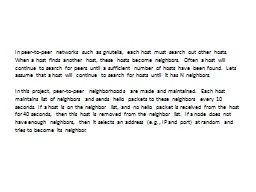PPT-Lac hosts Mouth parts of insect
Author : nicole | Published Date : 2023-05-20
Sucking type mouth parts Suck plant juices sole mode of feeding Host plants for lac cultivation are important Hosts A large variety of plants can function as lac
Presentation Embed Code
Download Presentation
Download Presentation The PPT/PDF document "Lac hosts Mouth parts of insect" is the property of its rightful owner. Permission is granted to download and print the materials on this website for personal, non-commercial use only, and to display it on your personal computer provided you do not modify the materials and that you retain all copyright notices contained in the materials. By downloading content from our website, you accept the terms of this agreement.
Lac hosts Mouth parts of insect: Transcript
Download Rules Of Document
"Lac hosts Mouth parts of insect"The content belongs to its owner. You may download and print it for personal use, without modification, and keep all copyright notices. By downloading, you agree to these terms.
Related Documents














